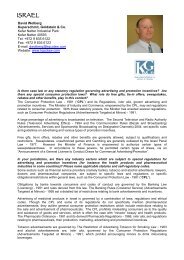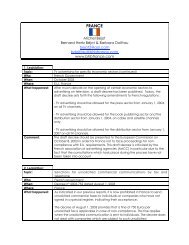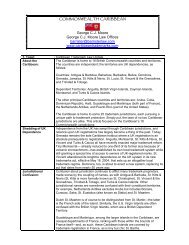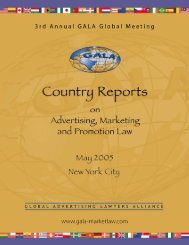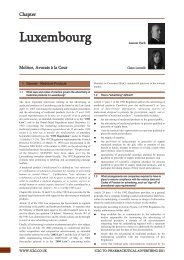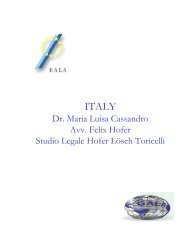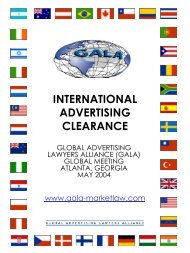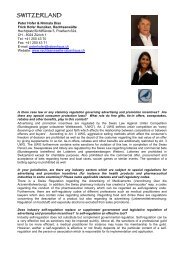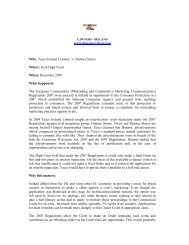Country Report - GALA
Country Report - GALA
Country Report - GALA
You also want an ePaper? Increase the reach of your titles
YUMPU automatically turns print PDFs into web optimized ePapers that Google loves.
not satisfied with the advertiser’s response, then the matter will continue<br />
through the traditional ASC complaint process. If the complainant is<br />
satisfied, the matter will not proceed further.<br />
Comment: The revisions to the Code, as well as the development of Interpretation<br />
Guidelines, are important in allowing advertisers both more flexibility and<br />
greater certainty with respect to how the ASC will apply the Code. The<br />
new procedure for complaints about Safety and Unacceptable<br />
Depictions and Portrayals has the potential to lead consumers to a better<br />
understanding of the advertiser’s position, and may encourage<br />
advertisers to be more directly accountable to consumers.<br />
2. Industry<br />
Guidelines<br />
Topic: Canadian Guidelines With Respect to the Sale and Marketing of<br />
Diamonds, Colour Gemstones and Pearls<br />
Who: Jewellers Vigilance Canada Inc.<br />
When: August 2003<br />
Where: Canada<br />
What happened: The Canadian Guidelines With to the Sales and Marketing of Diamonds,<br />
Coloured Gemstones and Pearls have been revised. These Guidelines,<br />
endorsed by the Competition Bureau, address definitions and terminology<br />
for use in advertising and sale of diamonds, coloured gemstones and<br />
pearls. These Guidelines are to be followed with respect to any<br />
representation, in any media, regarding these items.<br />
It is contrary to the purposes of the Guideline: (a) to make a<br />
representation that does not confirm in all respects to these Guidelines in<br />
the selling, advertising, or distribution of any substance defined in these<br />
Guidelines; or (b) to make any misleading or deceptive statement,<br />
representation or illustration relating to origin, formation, production,<br />
condition or quality of any substance defined in these Guidelines. Some<br />
examples of the guidance provided by this document are as follows:<br />
• It is contrary to the purpose of the Guidelines to refer to any<br />
diamond or coloured gemstone to identify any substance that<br />
has been partly or wholly created through human intervention.<br />
Such items must be identified as synthetic, composite,<br />
assembled, artificial, imitation, or simulated, as appropriate.<br />
This qualification must immediately precede the word<br />
diamond or coloured gemstone. Neither phrase may be<br />
given greater prominence or emphasis, or may be separated<br />
from each other.<br />
• The term “carat”, in reference to diamonds, may not be used<br />
where it could be presumed to refer either to karat weight or<br />
precious metal quantity.<br />
• It is unacceptable to use the word “perfect” to refer to any<br />
attribute of a pearl, cultured pearl, coloured gemstone or<br />
diamond.<br />
• With respect to coloured gemstones, the term semi-precious<br />
should not be used in any context.<br />
Comment: These Guidelines complement those established in the Canadian



